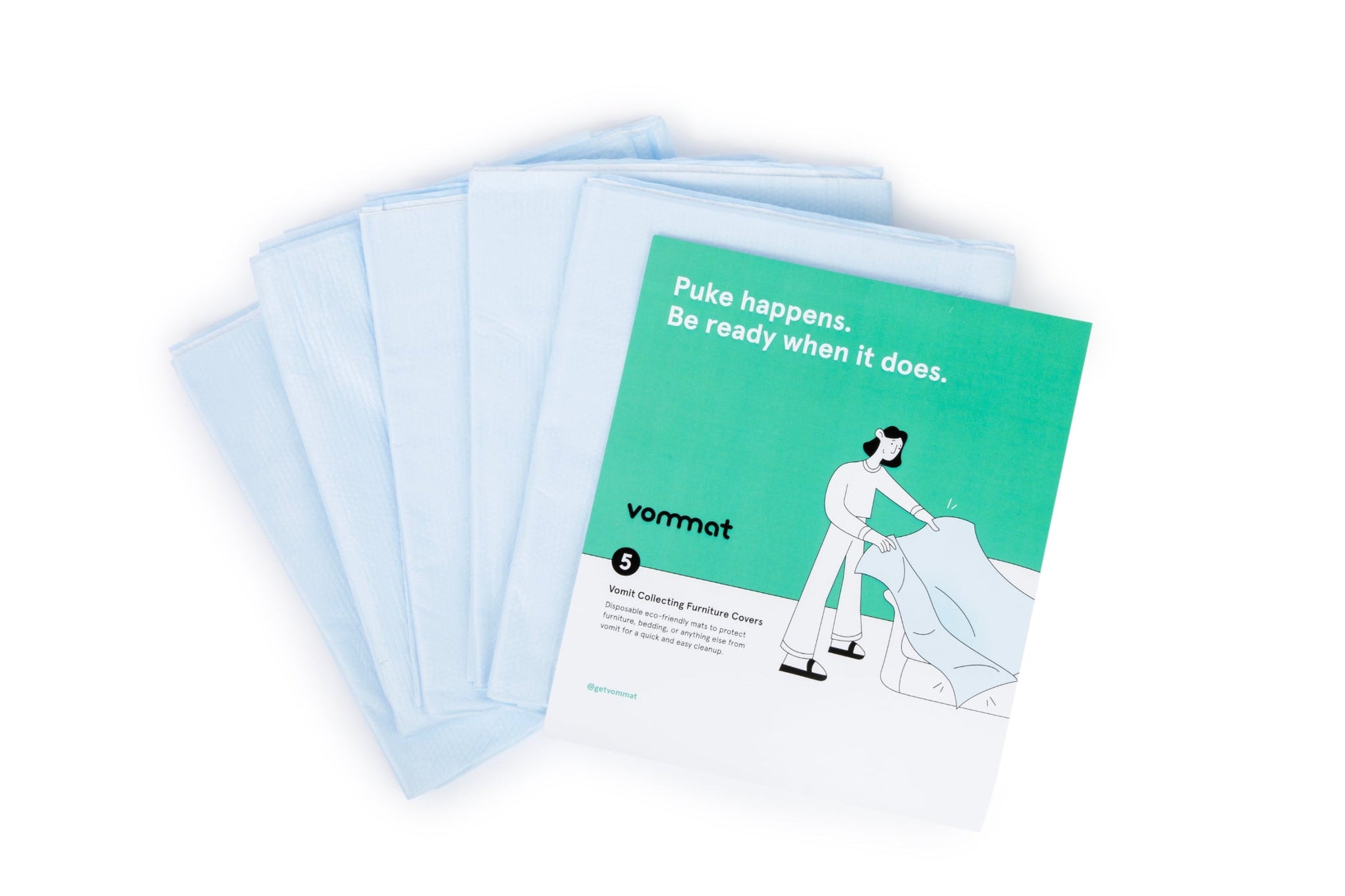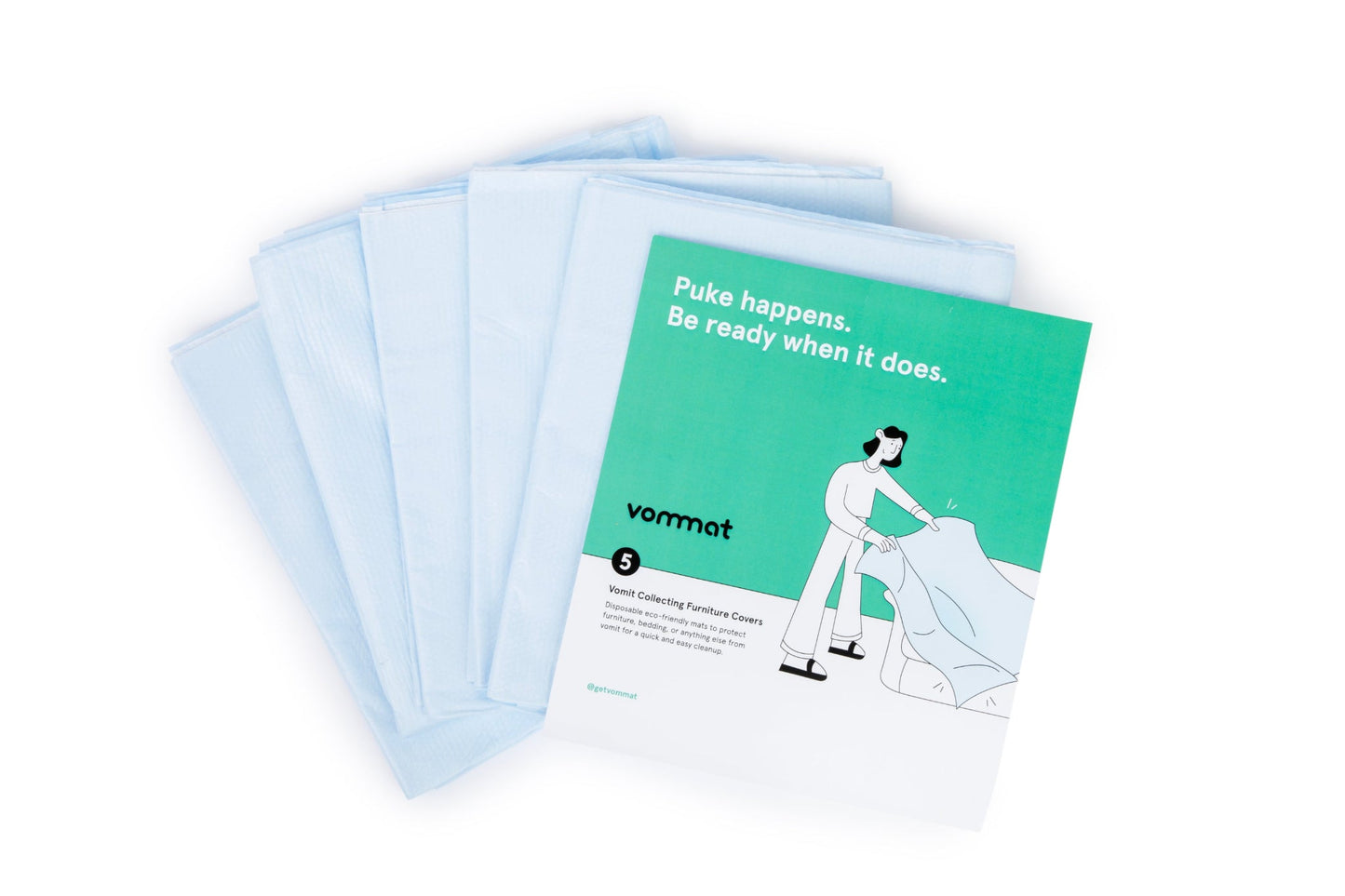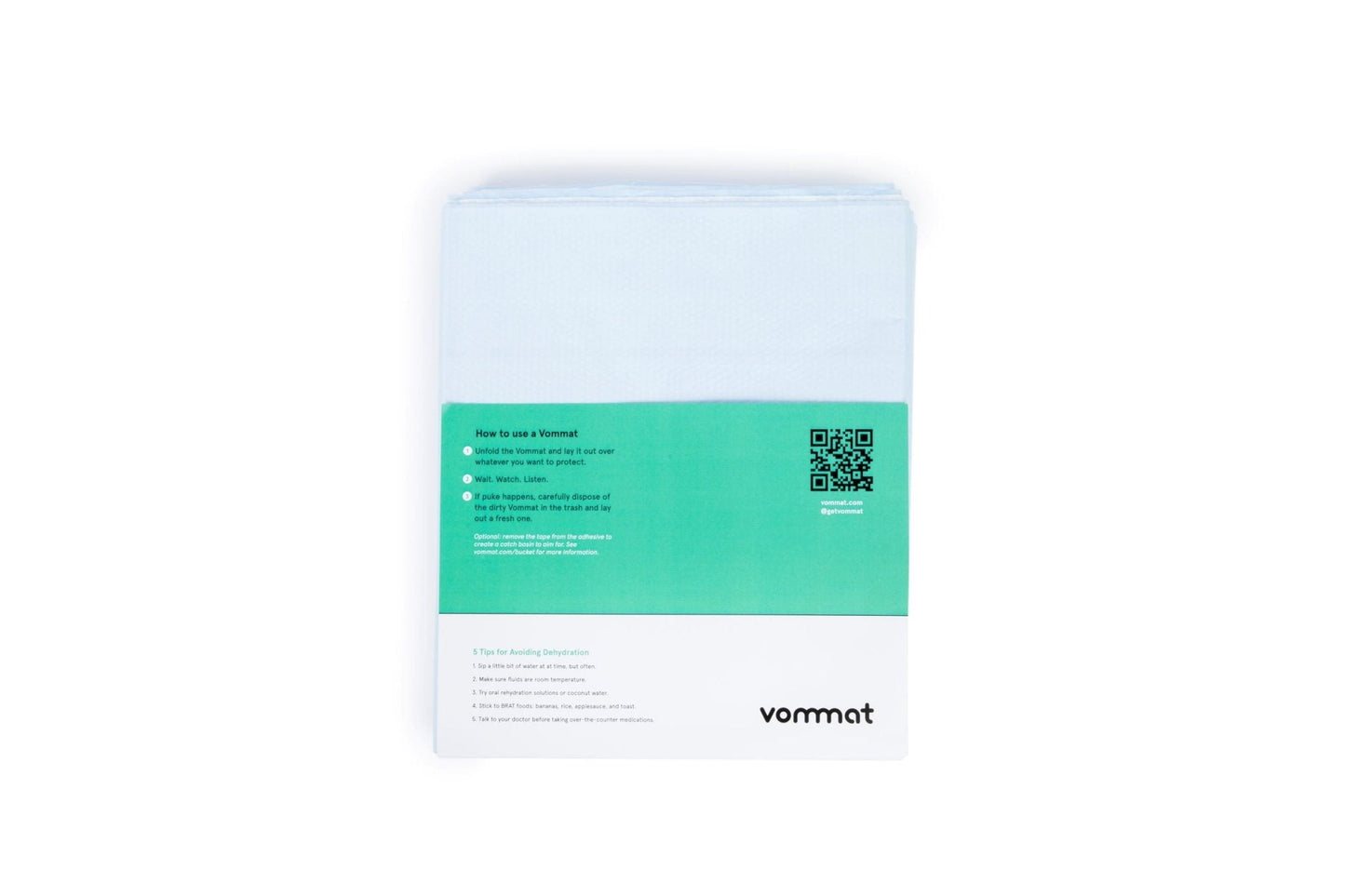Stomach bugs, commonly known as gastroenteritis, can be a challenging experience for any family but it can be especially trying with young kids. From the unsettling sensations of the symptoms to the contagious nature of these illnesses, managing them effectively can seem daunting but is vital to maintaining your sanity. In this post, we'll delve into the science behind stomach bugs, highlighting their causes, symptoms, duration, and contagiousness. We'll also explore practical strategies to minimize their impact on your family, with a special focus on how innovative solutions like Vommats can offer much-needed relief during these difficult times. Let's go!
Understanding Stomach Bugs: Causes and Symptoms
Stomach bugs are typically caused by viral or bacterial infections that lead to inflammation of the stomach and intestines. Viral gastroenteritis, often referred to as the stomach flu, is the most common culprit, with viruses like norovirus and rotavirus being offenders. Bacterial gastroenteritis can also be caused by bacteria such as Salmonella, Escherichia coli (E. coli), and Campylobacter. Yikes.
The symptoms of stomach bugs can include nausea, vomiting, diarrhea, abdominal cramps, and sometimes a low-grade fever. These symptoms can lead to discomfort and distress, especially in younger children and it can be hard to see them feeling so bad. Sick kids are just so pitiful, aren't they?
Duration and Contagiousness
The duration of stomach bugs can vary depending on the specific virus or bacteria causing the illness. But generally, viral gastroenteritis can last from one to three days, while bacterial infections might persist for longer periods. It's important to note that stomach bugs are highly contagious, easily spreading from person to person through close contact, contaminated food or water, or contact with infected surfaces. This is why they can swirl so easily around a classroom and then among family members at home. This is also why it's so important to try to mitigate the spread when there's a stomach bug in your home.
Minimizing the Impact: Tips for Families
-
Emphasize Hygiene: Encourage frequent handwashing with soap and water, especially before eating and after using the bathroom, to prevent the spread of germs. Get some yummy smelling soaps or soaps with a favorite character on the packaging to help get better compliance!
-
Keep Hydrated: When ill with a stomach bug, many people don't want to eat or drink at all but it is important to try to get some liquids in. Promote the intake of clear fluids like water, electrolyte solutions, and clear broths to prevent dehydration which is a common concern during bouts of vomiting and diarrhea, especially in children. You can try testing a little bit first to make sure it doesn't come right back up.
-
Implement Sanitation Measures: Disinfect commonly touched surfaces and objects to minimize the risk of spreading the infection within the household. Things like door handles, light switches, the remote are big ones to make sure you clean well.
-
Opt for Vommats: Introduce the use of Vommats, eco-friendly disposable sheets designed to provide a convenient and hygienic solution for managing vomiting incidents, easing the cleaning process, and protecting carpets and furniture from stains and odors. Buy here.
Dealing with stomach bugs can be a challenging ordeal for any family - definitely something no one wants to deal with. Ever. But it happens. With some understanding of the causes, symptoms, duration, and contagious nature of these illnesses, as well as implementing effective measures like promoting hygiene, ensuring hydration, and incorporating innovative solutions like Vommats, parents can make strides toward reducing the impact a stomach bug has on their households. You can do it!
Featured image by Neringa Hünnefeld on Unsplash.









